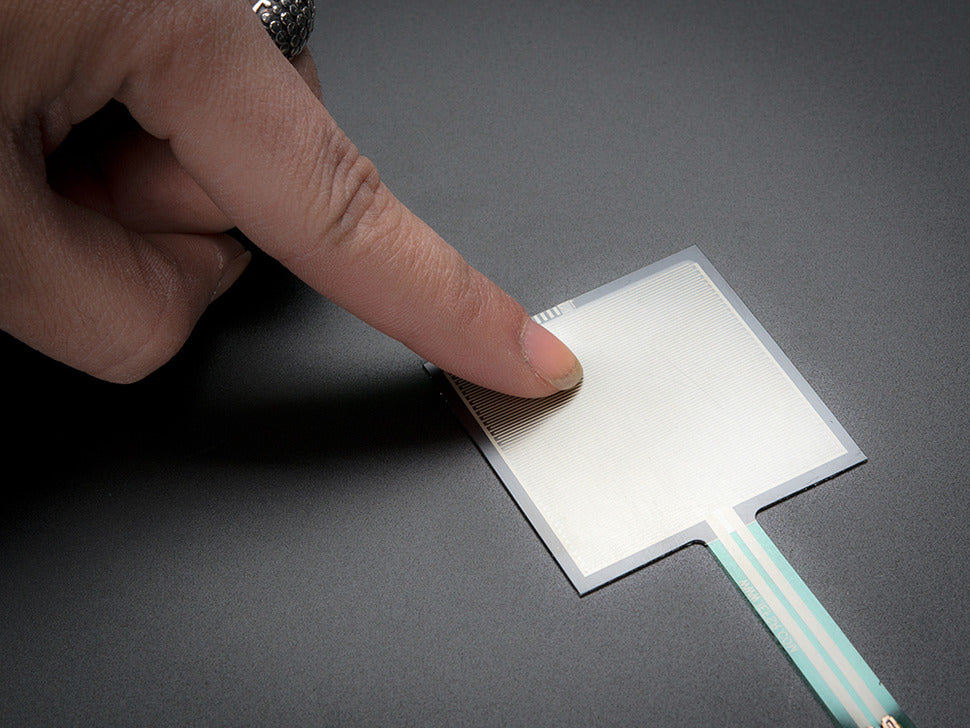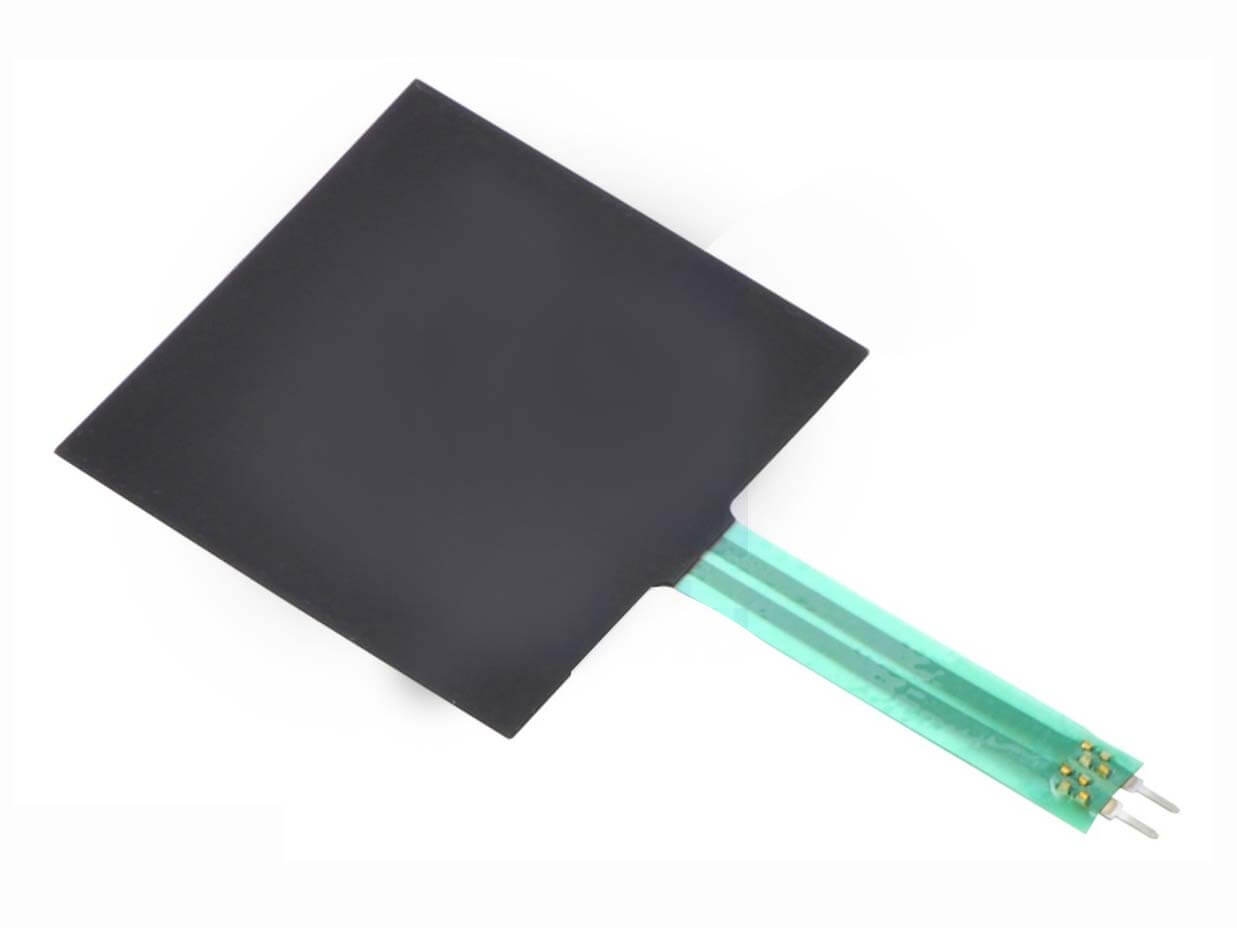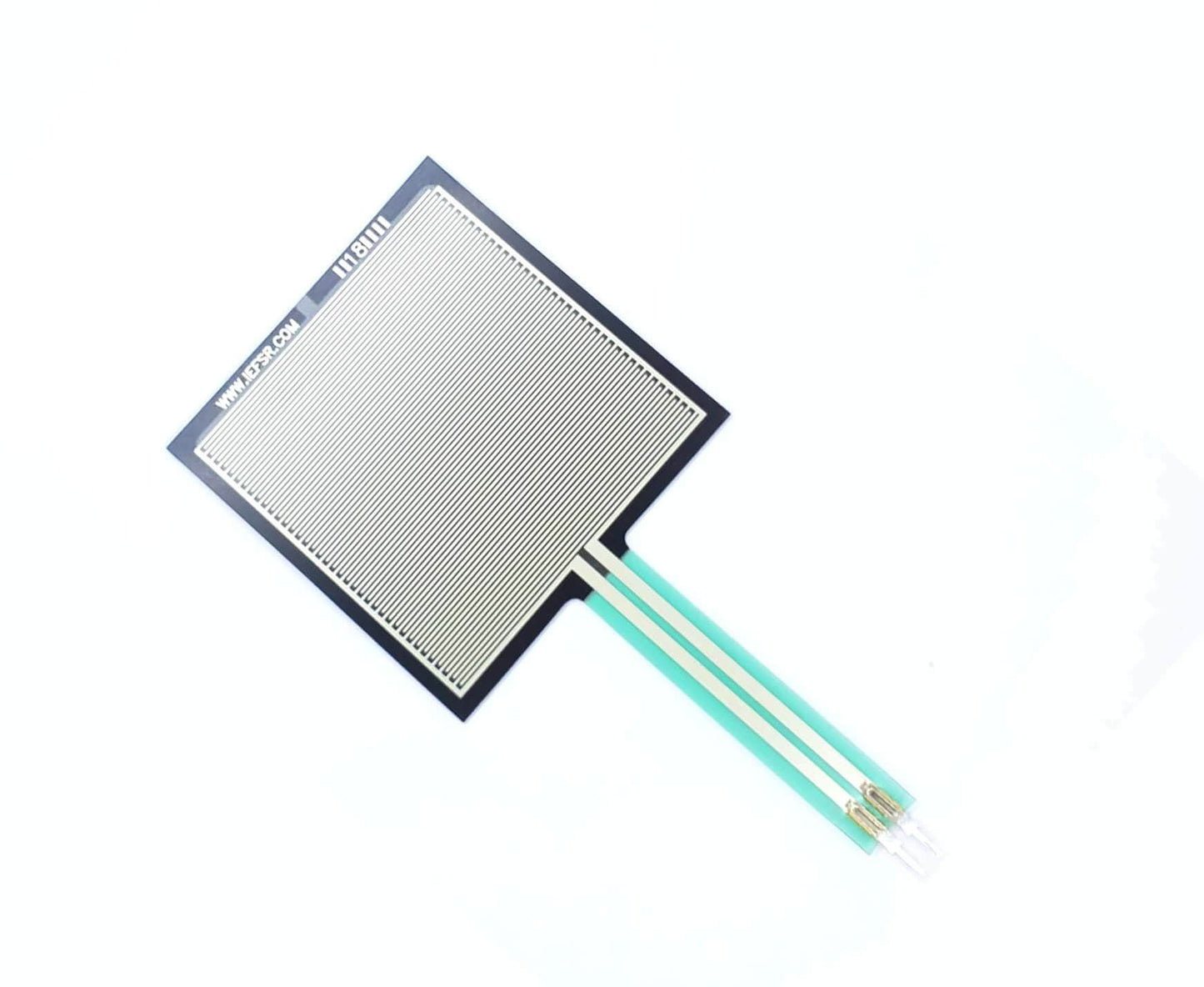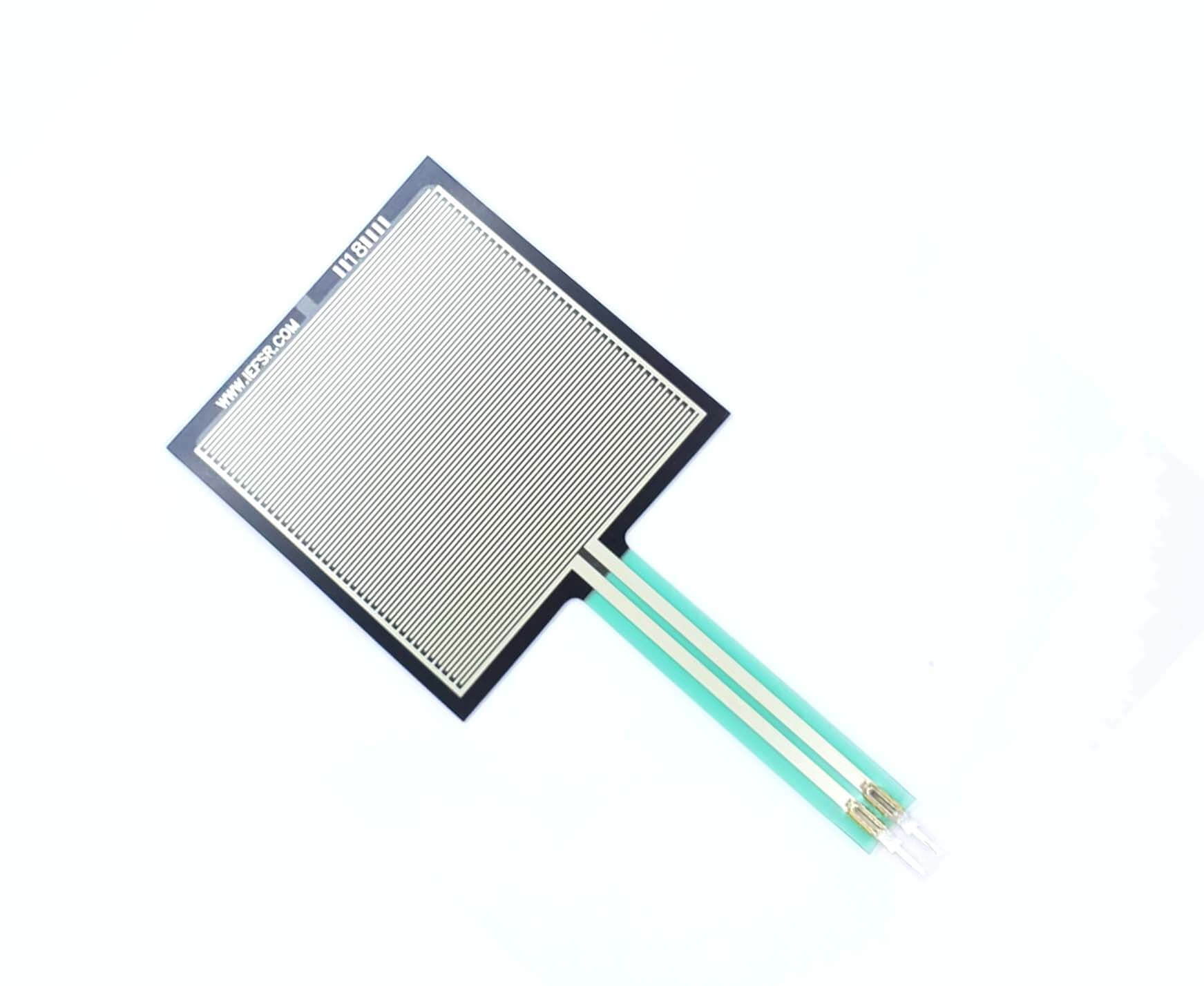Force-Sensitive Resistor (FSR) Square - FSRs are sensors that allow you to detect physical pressure, squeezing, and weight. They are simple to use and low-cost. This sensor is an Interlink model 406 FSR with a 38mm square sensing region. Note that this sensor can't detect where on the square you pressed (for that, check out our ribbon soft pots or capacitive touch pad ).
FSRs are basically a resistor that changes their resistive value (in ohms Ω) depending on how much it's pressed. These sensors are fairly low-cost and easy to use but they're rarely accurate. They also vary some from the sensor to sensor perhaps 10%. So basically when you use FSRs you should only expect to get ranges of response. While FSRs can detect weight, they're a bad choice for detecting exactly how many pounds of weight are on them.
FSRs are made of plastic and the connection tab is crimped on delicate material. The best way to connect to these is to simply plug them into a breadboard or use a clamp-style connector like alligator clips, a female header, or a terminal block. It is possible to solder onto the tabs but you must be very fast because if your iron is not good quality or you dally even a few seconds, you will melt the plastic and ruin the FSR! Don't attempt to solder directly to your FSR unless you are absolutely sure you have the skills to do so.
A Force-Sensitive Resistor (FSR) is a type of sensor that can detect changes in pressure or force applied to it. When pressure is applied to the sensor, the resistance of the material changes, allowing more or less current to flow through it. This change in resistance can be used to determine the amount of force being applied to the sensor.
An FSR square is a specific form factor of an FSR, in which the sensor is square-shaped. It is similar in concept to other FSR form factors, such as round or rectangular. They can use for various applications.
How To Use A Force-Sensitive Resistor (FSR)?
To use an FSR square, it typically requires to be connected to a microcontroller or other control electronics. This will read the resistance value of the FSR, convert it to a meaningful measurement, and then do something based on that measurement. You can use a variety of programming languages or pre-built libraries to interact with the FSR.
There are several ways to use a Force-Sensitive Resistor (FSR) square, depending on the specific application. Here are a few examples:
- Pressure sensing - One of the most common uses of an FSR is to detect changes in pressure. The sensor can be used as an input device for interactive projects, for example, a button for a DIY project.
- Force sensing - FSR can also be used to detect changes in force. This can be useful for measuring the weight of an object or the amount of force applied to a surface.
- Proximity sensing - By placing an FSR behind a non-conductive surface, such as a rubber button, it can be used as a proximity sensor.
- Movement sensing - By placing an FSR in a specific location, it can detect changes in movement or position. This can be useful for creating a simple tilt sensor.
For a full tutorial with wiring diagrams, code examples and project ideas, please read the FSR tutorial page!
TECHNICAL DETAILS
- Length: 88mm/3.47
- Width: 43.7mm/1.72in
- Thickness: 0.42mm/0.0165in
- Weight: 1.12g/0.04oz
- The FSR datasheet contains force/resistance graphs, diagrams, etc!
Force-Sensitive Resistor (FSR) Square
Force-Sensitive Resistor (FSR) Square
Out of stock
Product Code
SKU:1075
Couldn't load pickup availability






